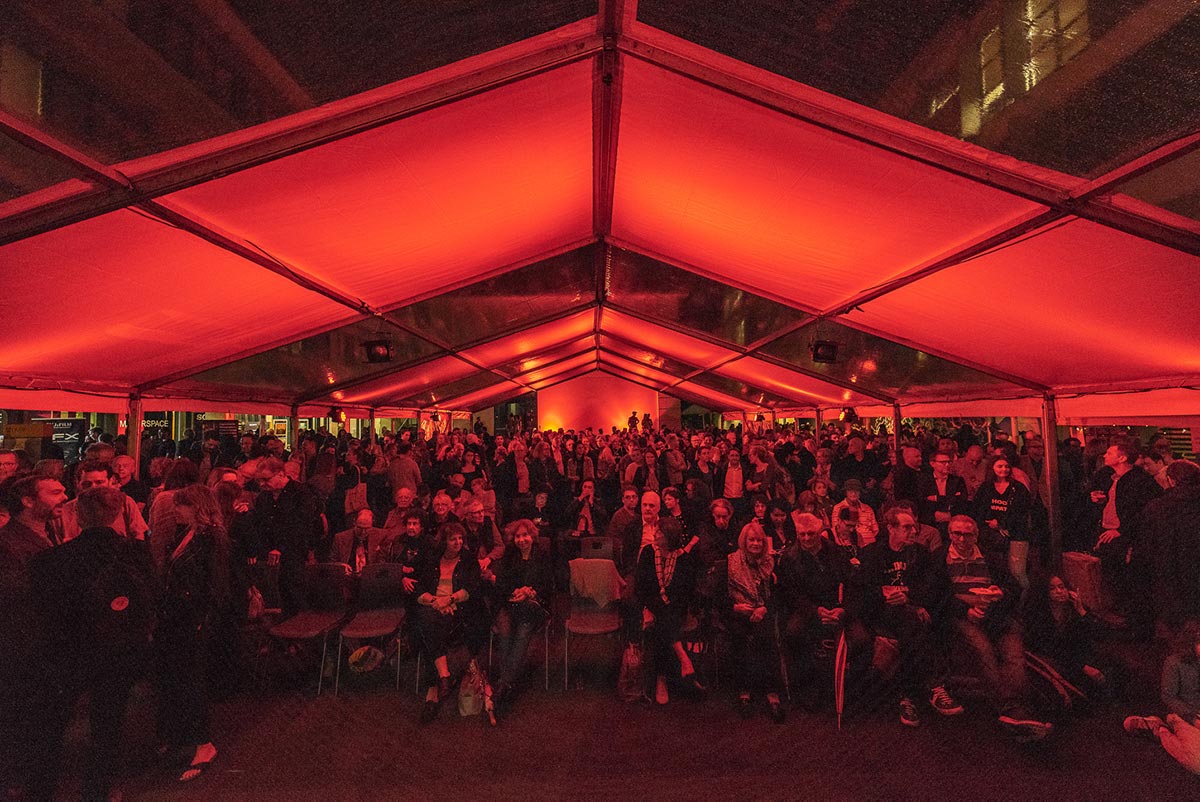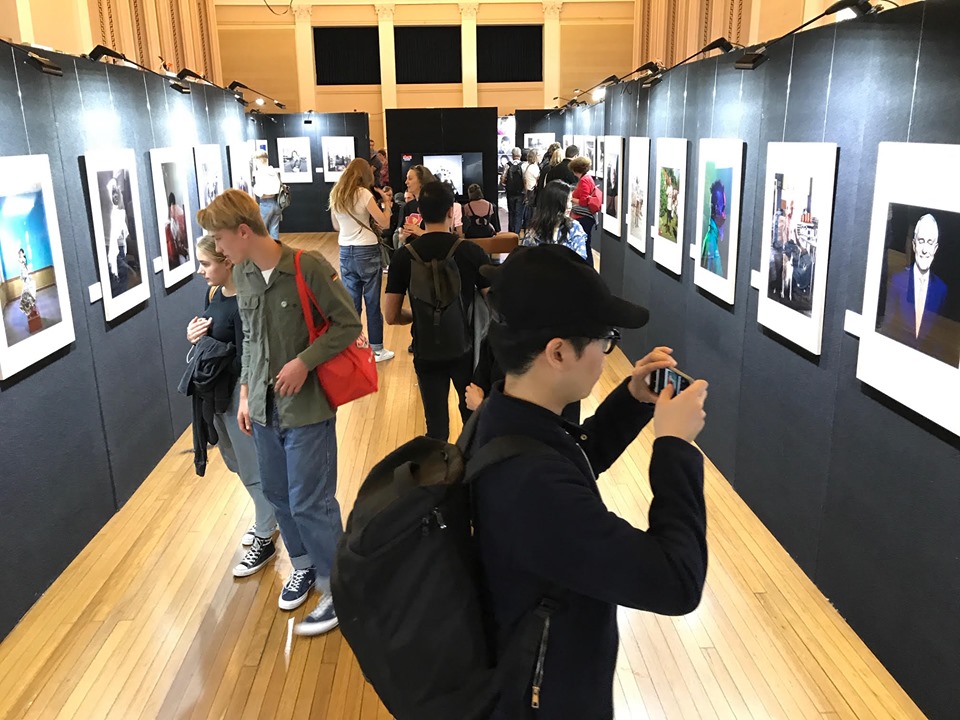After struggling to run the Head On Photo Festival for a decade on a shoestring budget, founder Moshe Rosenzveig (OAM) is asking the photo industry to collaborate and provide substantial support to secure the future of the largest celebration of photography in Australia’s largest city.

With the 1oth Head On Photo Festival wrapped up, Moshe should be on a high, after yet another stellar year of splashing colour and life onto Sydney’s walls. Instead he has the ‘post-festival blues’ and is again asking serious questions about the future of Head On.
‘Every year we say the same thing, it’s extremely challenging to pull it off financially. But now here we are after 10 years, not much has changed, in fact it’s getting harder,’ Moshe told Inside Imaging. ‘I know this may just be the post-festival blues, but with so little support I’m not sure if I want to do it anymore. This is the reality. If we don’t receive serious support next year we may not run it again.’
This year the not-for-profit organisation showed over 100 photo exhibitions across 58 venues, hosted free artists’ talks with international and local photographers, conducted the Head On Awards, and ran other events and workshops. Since its inception Head On has provided photographers with over $600,000 in cash and prizes, and worked with 320 galleries and public venues to provide a platform for 5100 artists.

Head On 2019 had two major sponsors: Fujifilm, the festival’s long-term partner, and, for the third year, Sony. Both offer significant financial support. The remaining industry partners are smaller local businesses, which provide crucial ‘in-kind support’ – goods and services that contribute to running the festival. Moshe is grateful for this essential support, but it’s not feasible or fair to ask more of these smaller players.
There’s hope other major companies like Olympus, Panasonic, Epson, Nikon, or even Canon will support Head On next year. Most companies were on board at some stage during the last 10 years, but it’s an increasingly hard sell.
A challenge Moshe identifies as almost uniquely Australian is the reluctance of major brands to work together on long-term projects. Head On partners were originally offered an exclusive sponsorship, but the big brands have been pulling back on support for major photographic events. The AIPP lost its long-term APPA sponsor, Canon, in 2016. Canon reportedly refused to merge the awards with The Nikon Event for the benefit of AIPP members to attend one annual event rather than two. The end result: neither company now supports the AIPP with significant sponsorship.
Canon had also supported Head On for many years, but when it withdrew that support it rubbed salt into the wound by pushing Head On out from under the VIVID umbrella.
‘We were told we could not participate in VIVID because we did not work with Canon – even though we’re not a camera manufacturer and pose no threat to Canon,’ Moshe told Inside Imaging in 2016.
However that same year there was a glimmer of hope when Fujifilm, Olympus and Panasonic came onboard as major partners.
‘The whole idea of the festival is a celebration of photography and I’ve been working really hard for years to have these players stand together and enjoy it – not feel threatened by each other,’ Moshe said in 2016. ‘Having smaller contributions from more industry players is better for everyone. Everyone in the industry, not just professional photographers, will benefit from it. More cameras will be sold, more printers, more ink, more bags, more everything. They’ll be more visible to the general public.’
The following year Moshe was thrilled when Sony also joined up – four big brands working side-by-side. But the glory days didn’t last. Managerial shifts in the camera companies meant Head On had to rebuild relationships and convince the ‘new brooms’ to maintain sponsorships they hadn’t developed themselves. The prevailing perception was that working on projects independently presents better value rather than in unity.
Imaging and Digital Entertainment Association (IDEA) president, James Murray (also Nikon Australia managing director), made a similar reflection in 2017 when discussing a potential future industry event.
‘(In the current climate the unity of purpose a group like IDEA represented) was perhaps not appreciated by some of the new management groups who have not experience past value from IDEA, or formerly PICA,’ he said. ‘Brands now seem to be more independently competitively-focused, rather than balanced with an interest in working for the industry’s benefit collectively.
‘I certainly understand this as company’s resources are stretched and time required to invest in industry-building is hard to justify. It can be perceived this would be at the expense of a competitive edge the brand would otherwise have.’
It would be an unmitigated loss for Sydney’s Head On Photo Festival to disappear from the calendar. With a proven and well-honed formula, there is no other large-scale annual photography event like it in Australia. Head On curates a truly eclectic spread of local and international photography; supports artists from all backgrounds and at different stages of their career; takes risks, pushes boundaries, and importantly inspires people to take pictures; and at its core it is run by photographers, for photographers and enthusiasts alike.
It’s a refreshing approach to the brand-driven activities speckled throughout the year, which have a single sponsor rolling out the same tried-and-tested line-up of ambassadors and speakers.
Beyond the industry
Head On also receives money from award entry fees, donations, and a limited government funding pool from Create NSW, the City of Sydney and Woollahra Councils.
There’s no financial assistance from Australia Council for the Arts, the Federal Government’s arts body, which is undergoing a $60 million four-year funding cut.
Head On Photo Festival attendees would be forgiven for not picking up on the urgent financial situation. It’s a sleek, polished production, and boasts an outstanding local and international reputation and widespread media coverage.
Yet behind the scenes are just three full-time workers: Moshe, his partner Anita Schwartz, and Stephen Godfrey.
Throughout the year Head On is operated out of Moshe and Anita’s home to minimise overheads, with half the household turned into a storage facility and office. After that, there’s a dedicated team of unpaid volunteers keeping the cogs moving.
Head On realistically needs two more people to handle the workload, Moshe says, ideally a marketing and communications manager, and production manager.
As was the case for Jeff Moorfoot (OAM), the founder of Ballarat International Foto Biennale, running the festival is a labour of love and pays less than minimum wage. Jeff’s comment in 2015 that ‘in terms of the big players, they still shun us’ resonates. The Biennale has turned its back on the photo industry since new director Fiona Sweet assumed the role, preferring to draw patronage from and identify itself with the broader arts community.
We’ve lost that one – let’s hold on to this one!
‘We’re proud of what we do. The festival is amazing. But the reality is we must seriously consider whether we can run it again with this sort of money. It’s a great opportunity for the industry but if they don’t recognise it, I can’t do anything. We had 12,000 people going through the Festival Hub. Every single person’s feedback says it’s either excellent or very good. They comment about the content, the presentation, the general festival, events and talks. I know we’re doing a great job.
‘The main question is how do we get the industry more involved? It’s ridiculous that 10 years later, with this sort of quality, visitation, and this reputation we have both here and overseas, we’re still struggling with sponsors.’
While this might just be the post-festival blues a’talkin’, if there was a time for Australia’s photo industry to rally behind Head On, it’s now.





Be First to Comment